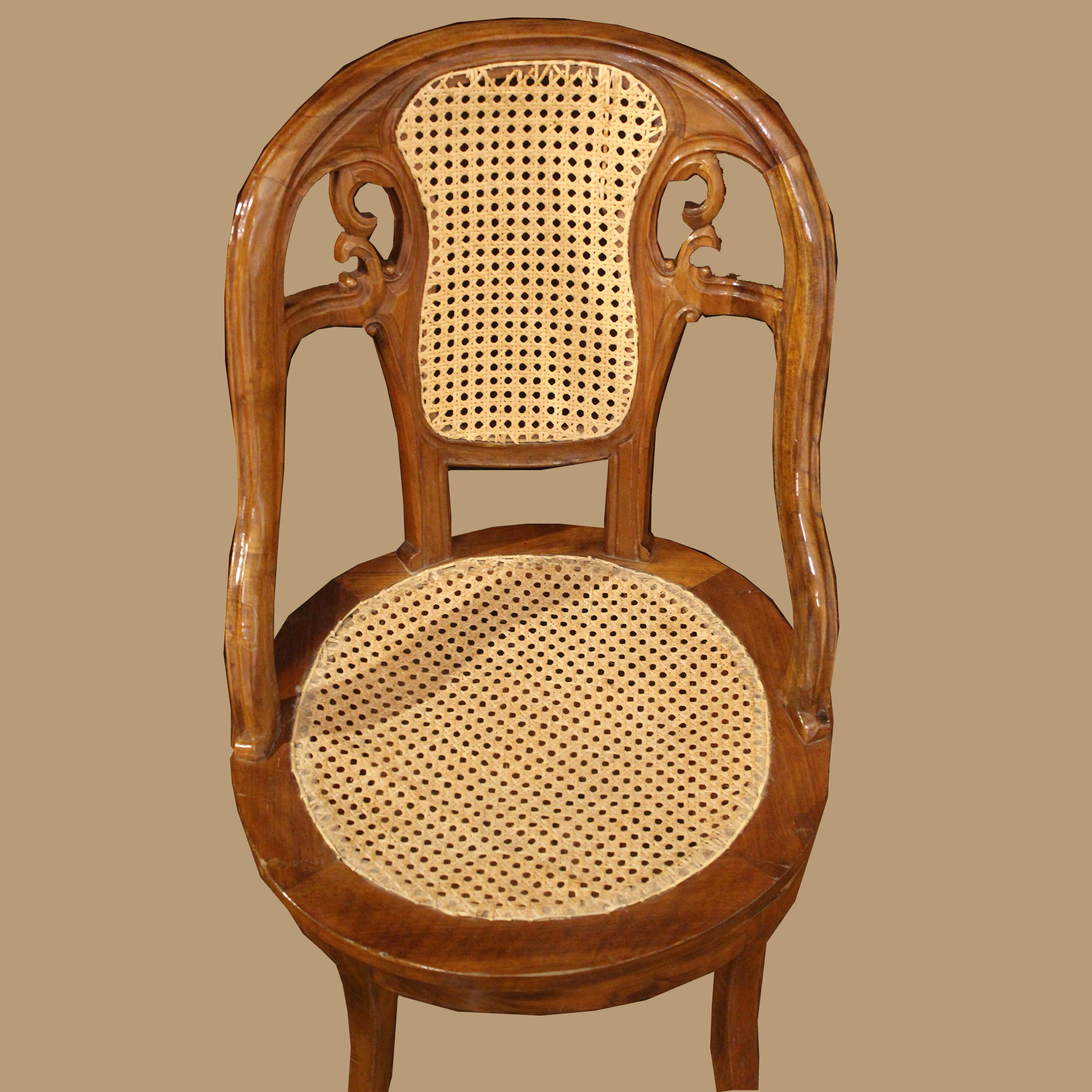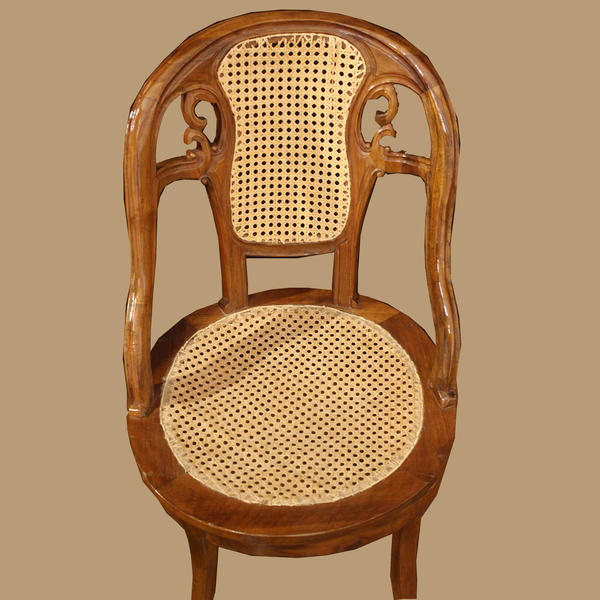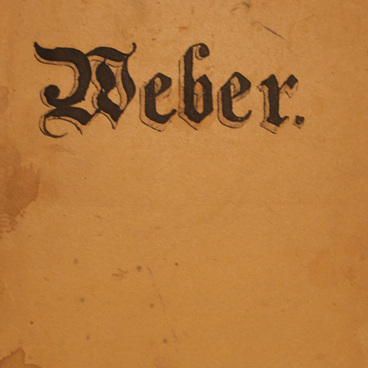One of the exhibits at the Memorial Estate is a chair of solid bent walnut with wicker insets in the seat and back. The piece of furniture was manufactured in the second half of the 19th century. The back legs and the top surface of the seat frame are veneered in walnut. The backrest with its carved elements and the legs are curved. The chair is executed in imitation Rococo style, datable by analogy to the third quarter of the 19th century.
In the 1880s, the chair was owned by Nikolai Chernyshevsky. As he moved from Astrakhan to Saratov, the writer cherished new hopes for overcoming the prohibitive barriers of censorship and working for periodicals published in Moscow. This is recorded by W.F. Richter, owner of a printing shop where Kozma Soldatenkov published Chernyshevsky’s Materials for the Biography of N.A. Dobrolubov.
Chernyshevsky also planned to contribute to local periodicals. According to Ivan Gorizontov, publisher of the Saratov Gazette, the writer intended to publish materials in his paper, adding: “Without signing my name, obviously, to avoid trouble both to myself and you…”
Ivan Lipayev, an actor, visited Chernyshevsky in his house in early August 1889. “I had the impression that the study and its owner were one inseparable whole”, he wrote. “Books were lining the shelves from top to bottom. Chairs, window sills, the writing desk – all was covered in books…”
After Chernyshevsky’s death, Olga gave the chair to the family of Bukovsky, her relations on her sister’s side. On the inside of the seat frame she wrote – and the words are still visible: “The chair of the late Nikolai Gavrilovich Chernyshevsky. From… (To the museum…)”. Part of the inscription is missing due to a broken leg that was repaired. The leather wrapping of the legs has not survived.
The chair was donated to the museum by the Bukovsky family on February 11, 1925. In 1978 it was restored at the All-Russia Production, Research and Restoration Works in Moscow. Today, the chair is displayed in the exposition Worthy Son of Fatherland, section Chernyshevsky and Saratov.
In the 1880s, the chair was owned by Nikolai Chernyshevsky. As he moved from Astrakhan to Saratov, the writer cherished new hopes for overcoming the prohibitive barriers of censorship and working for periodicals published in Moscow. This is recorded by W.F. Richter, owner of a printing shop where Kozma Soldatenkov published Chernyshevsky’s Materials for the Biography of N.A. Dobrolubov.
Chernyshevsky also planned to contribute to local periodicals. According to Ivan Gorizontov, publisher of the Saratov Gazette, the writer intended to publish materials in his paper, adding: “Without signing my name, obviously, to avoid trouble both to myself and you…”
Ivan Lipayev, an actor, visited Chernyshevsky in his house in early August 1889. “I had the impression that the study and its owner were one inseparable whole”, he wrote. “Books were lining the shelves from top to bottom. Chairs, window sills, the writing desk – all was covered in books…”
Olga Sokratovna, the writer’s wife, was concerned about his health and forbade him from working late into the night. When she heard the creaking of his desk chair, she would wake up and insist that he should go to bed. Chernyshevsky took pieces of leather and wrapped them round the bottom of the chair’s legs, fastening them with little nails, so that the creaking would not betray his late hours of work at the desk to his wife.
After Chernyshevsky’s death, Olga gave the chair to the family of Bukovsky, her relations on her sister’s side. On the inside of the seat frame she wrote – and the words are still visible: “The chair of the late Nikolai Gavrilovich Chernyshevsky. From… (To the museum…)”. Part of the inscription is missing due to a broken leg that was repaired. The leather wrapping of the legs has not survived.
The chair was donated to the museum by the Bukovsky family on February 11, 1925. In 1978 it was restored at the All-Russia Production, Research and Restoration Works in Moscow. Today, the chair is displayed in the exposition Worthy Son of Fatherland, section Chernyshevsky and Saratov.



